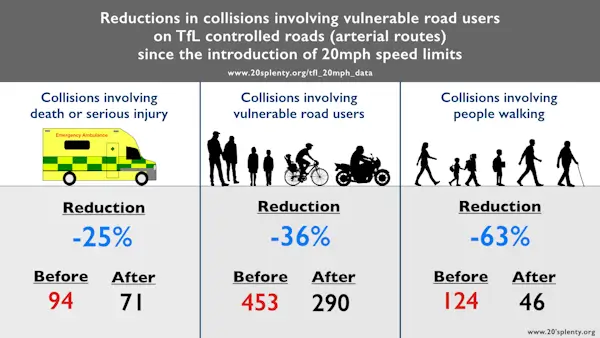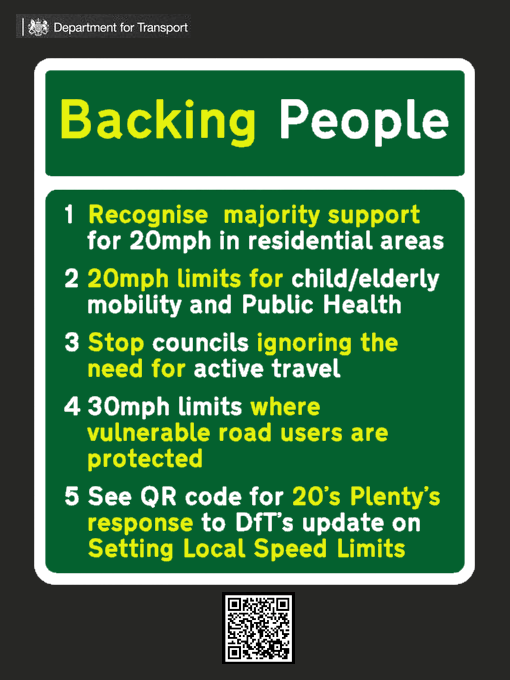The new guidance that the campaign objects to is included in Department for Transport Circular 01/2013 (March 2024 revision), announced as part of the government "Plan for Drivers".
20's Plenty's response analyses a number of details of the revised guidance and takes issue with several of the statements in it.
In particular, it questions the following statement (which was also included in the previous version of the guidance):
Research has shown that the risk of a pedestrian dying in a collision with a car increases slowly up to an impact speed of around 30mph, but at speeds above 30mph, the risk of death increases rapidly (Rosén and Sander, 2009)
20's Plenty comments:
This reference to the Rosen and Sander, 2009 report implies that there is little difference in survivability between 20mph and 30mph. This is not consistent with the findings of the report. The report's authors actually conclude:
However, a strong dependence on impact speed is present, with the risk at 50 km/h (32mph) being more than twice as high as the risk at 40 km/h (25mph) and more than five times higher than the risk at 30 km/h (18.5mph). This shows the importance of keeping impact speeds as low as possible within city areas where most pedestrian accidents occur.
We have added the mph equivalents in brackets above.
20's Plenty points out the significant reductions in pedestrian casualties recorded after TfL implemented 20mph limits on arterial roads, as shown in the graphic below:
 Click on the graphic to read the 20's Plenty for Us press release that it was published in
Click on the graphic to read the 20's Plenty for Us press release that it was published in
According to 20's Plenty, the Plan for Drivers will discriminate against several categories of people, many of them including people who themselves are drivers:
We note that the Government and DfT have not published a "Plan for pedestrians and cyclists", a "Plan for child and elderly mobility", a "Plan for place-making in communities" or a "Plan for Public Health". Whilst we could have hoped for any or all of these in the public interest, the current "Plan for Drivers" seems to be a plan against all of these beneficial outcomes of lower speed limits. This is a plan that fails to recognise that drivers have lives outside their cars. Lives in which their children, the elderly, the disabled, air pollution, noise and public health do matter to them. The Plan for Drivers and its consequences will discriminate against all of these people, many of whom have characteristics that are protected under the Equalities Act.




